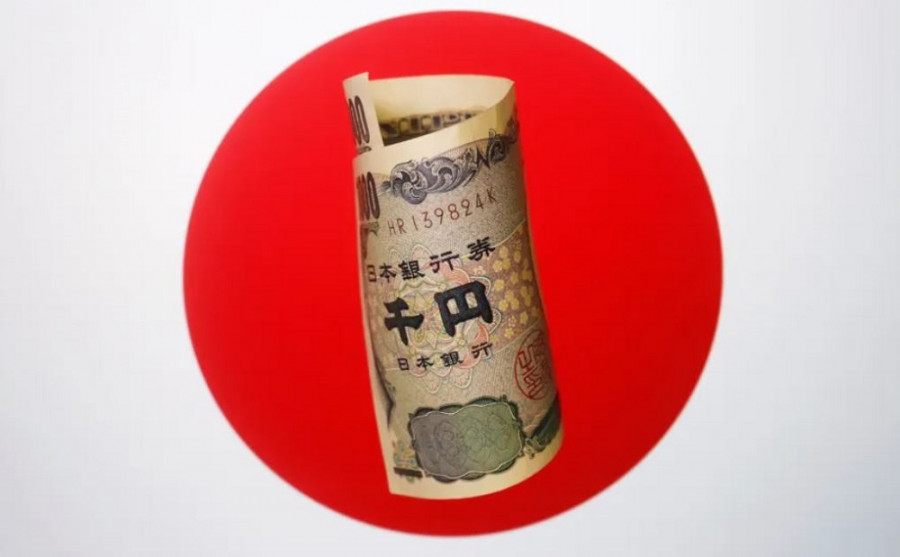The Bank of Japan, following the March meeting, finally decided to take the first step towards normalizing its monetary policy. For the first time since 2007, the regulator raised the interest rate, ending the era of negative rates—the Japanese Central Bank was the last central bank to maintain an ultra-loose monetary policy. However, it cannot be said that the era of soft monetary policy has ended: the Bank of Japan essentially removed the "ultra" prefix but retained an accommodative monetary environment.

Indeed, it is for this reason that the USD/JPY pair reacted to this decision with an impulsive rise. At the moment, the price is testing the 150 level, updating two-week highs. The pair is actively recovering the points lost in early March when traders played out the possibility of a rate hike, reacting to the strong outcomes of the "shunto" (annual negotiations between employers and unions). These assumptions and forecasts were fully justified, but in fact, the Bank resorted to a "dovish" rate hike, disappointing sellers of the USD/JPY pair.
So, on Tuesday, the Bank of Japan announced that the short-term interest rate is being raised by 10 basis points to a range of zero to 0.1%. This is the first rate hike in 17 years—the last time it was raised was in 2007 due to the country's economic growth acceleration (plus, in 2006, Japan managed to emerge from a prolonged period of deflation). For the first time since January 2016, the interest rate has stopped being negative.
In addition to the rate hike, the Japanese regulator decided to abandon the purchase of equity index funds and Japanese real estate funds and gradually, over the course of the year, to eliminate purchases of corporate bonds. Meanwhile, purchases of government bonds will continue.
In a accompanying statement, the regulator noted that these hawkish decisions were made against the backdrop of rising wages and income levels of the population. According to the central bank's leadership, these factors "contribute to achieving the inflation target at the level of 2%."
Reacting to the outcomes of the March meeting, the dollar-yen pair rose by a hundred points in just a few hours and is currently attempting to consolidate within the 150 level. It seems like an anomalous reaction to such a revolutionary and unexpected decision by the regulator. After all, many experts, including UBS analysts, persuaded their clients that the central bank would not change its policy in March, as the impact of "shunto" on small and medium-sized companies would only become apparent after the second and third rounds of negotiations, scheduled for March 22 and April 4 respectively (the second round being the most significant as it covers more than half of the total number of companies).
But, as we see, the Bank still decided to raise the rate this month. However, it provoked a "reverse" reaction of the Japanese currency. Why?
In my opinion, the main reason for this is the "dovish" nature of the interest rate hike. Long before the March meeting, Bank of Japan Governor Kazuo Ueda, stated that the Bank would maintain accommodative conditions, even in the event of abandoning the policy of negative rates. His deputy, Shinichi Uchida, also voiced a similar position, repeatedly emphasizing that the Bank intends to maintain a "stable and accommodative monetary environment."
Even after today's "revolutionary" decision, Japan's interest rate is far from the rates in other central banks of major developed economies in the world. Moreover, according to some experts, the Bank of Japan will keep the rate at the current level for a long period—at least until the first quarter of 2025.
It is also worth noting that the likelihood of a rate hike in March or April increased at the beginning of March, when the first results of wage negotiations with major Japanese corporations became known (according to them, average wages will increase by 4%). The yen then strengthened by more than 400 points, dropping from 150.50 to 146.40. And just a few days before the meeting, Japan's largest national trade union RENGO (which includes 54 member unions and 47 local organizations), announced that average wages this year would increase by an average of 5.30%—the largest wage increase in over 30 years.
Therefore, the modest 10-point rate hike to zero level without any clear prospects for further tightening of monetary policy put pressure on the yen, although it would be logical to expect the opposite reaction to such a "tectonic" shift in the Bank of Japan's policy.
What's next? Can we trust the current rise of USD/JPY?
If Ueda does not announce further steps towards tightening policy at the final press conference (which is highly unlikely), the pair will likely continue its upward path up to the "red line," which lies in the price range of 151.00 - 151.70. At this height, the risk of currency intervention significantly increases. Based on the experience of previous months (and years), it can be assumed that buyers of USD/JPY will hit the brakes around the 151 level. In any case, it's better not to "play around" with the 151 level—it's advisable to take profits in this price range.









